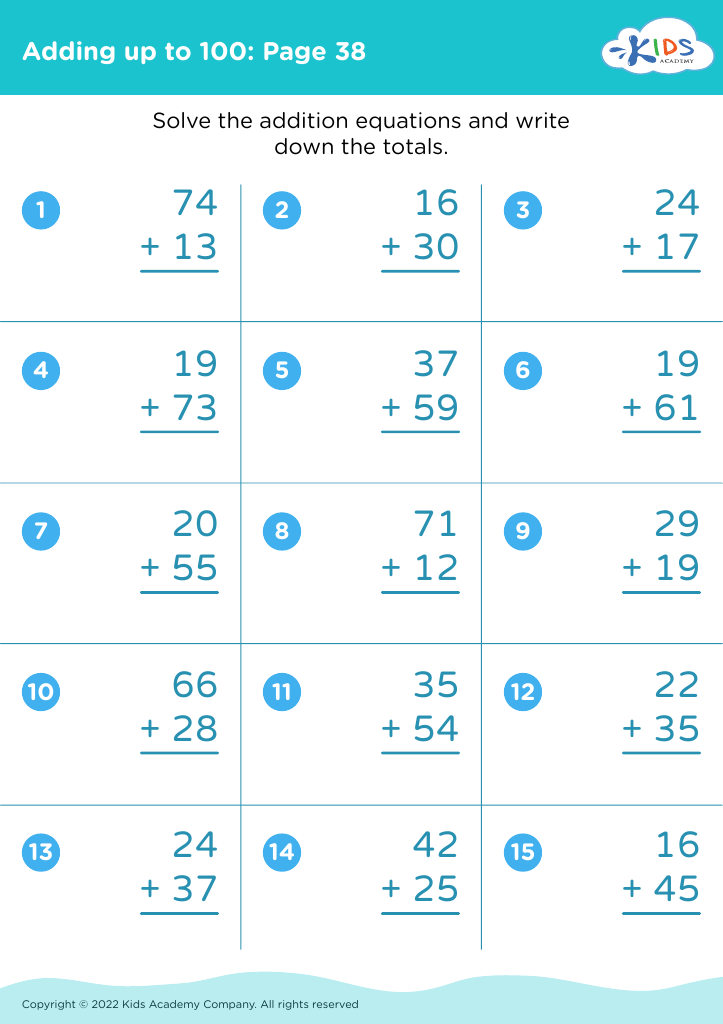Color matching Addition Worksheets for Ages 3-7
3 filtered results
-
From - To
Discover engaging color matching addition worksheets designed for children ages 3-7! These interactive resources help young learners develop their early math skills through vibrant visuals and fun activities. By associating colors with numbers, kids gain a deeper understanding of addition concepts while enhancing their cognitive abilities and fine motor skills. Each worksheet encourages hands-on learning, promoting both critical thinking and creativity. Perfect for home or classroom use, our color matching addition worksheets make learning math enjoyable and effective. Give your child the gift of confidence in math and watch their mathematical journey bloom with excitement!
Color matching addition is an engaging and interactive activity that fosters early mathematical skills for children aged 3 to 7. Parents and teachers should care about this approach for several compelling reasons. First, it promotes cognitive development by helping young learners understand fundamental concepts such as numbers, quantities, and basic addition in a visually stimulating manner. By incorporating colors, children can form connections between numbers and physical objects, enhancing their ability to grasp abstract concepts.
Moreover, color matching addition ensures that learning is fun and playful, capturing the natural curiosity and enthusiasm of young children. This immersive experience can encourage a positive attitude toward mathematics, making them more likely to enjoy and seek out similar activities in the future.
Additionally, color matching addition supports fine motor skills as children manipulate colored objects to solve problems, improving hand-eye coordination. It also fosters social skills when done in group settings, promoting teamwork and communication.
Lastly, these activities lay the groundwork for more complex mathematical concepts as children refine their ability to think critically and analytically. By integrating color into mathematics, parents and teachers cultivate a holistic learning environment that nurtures young minds and sets the stage for lifelong learning.











.jpg)








